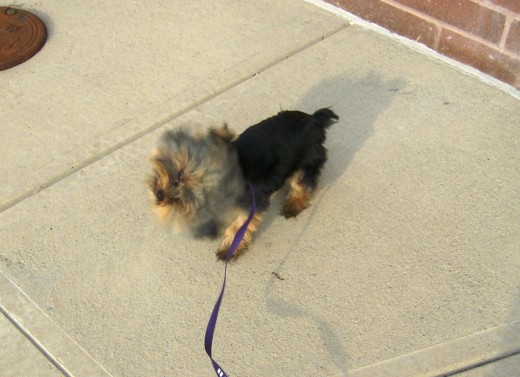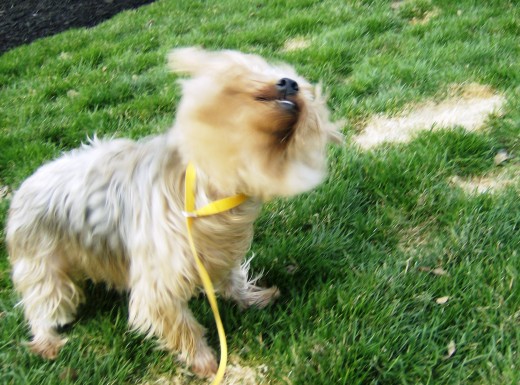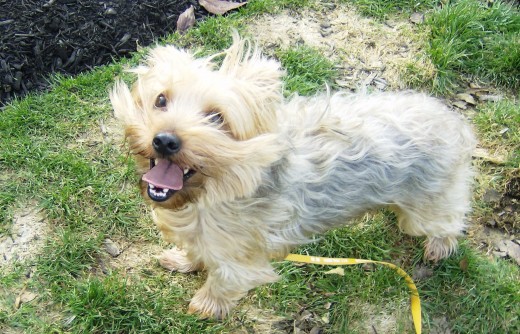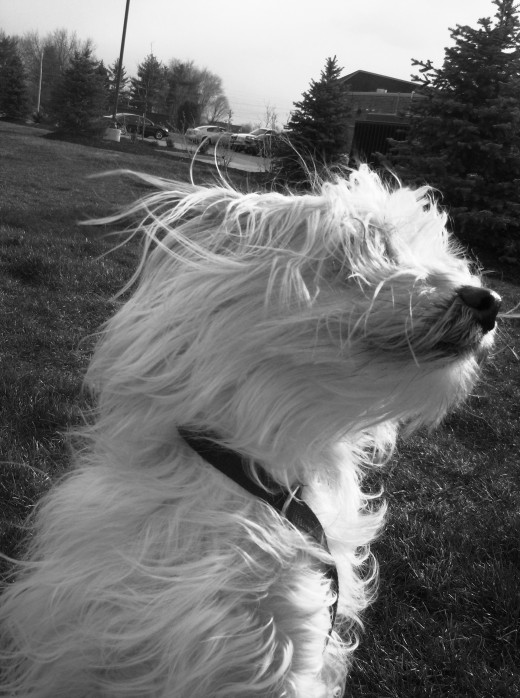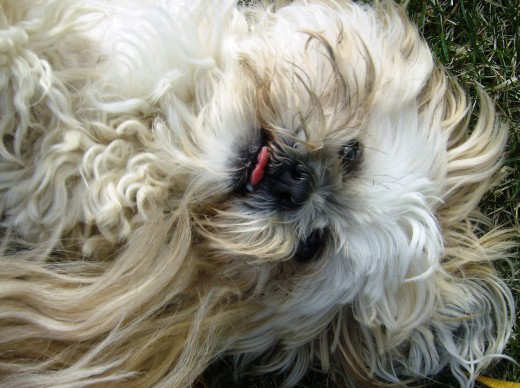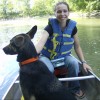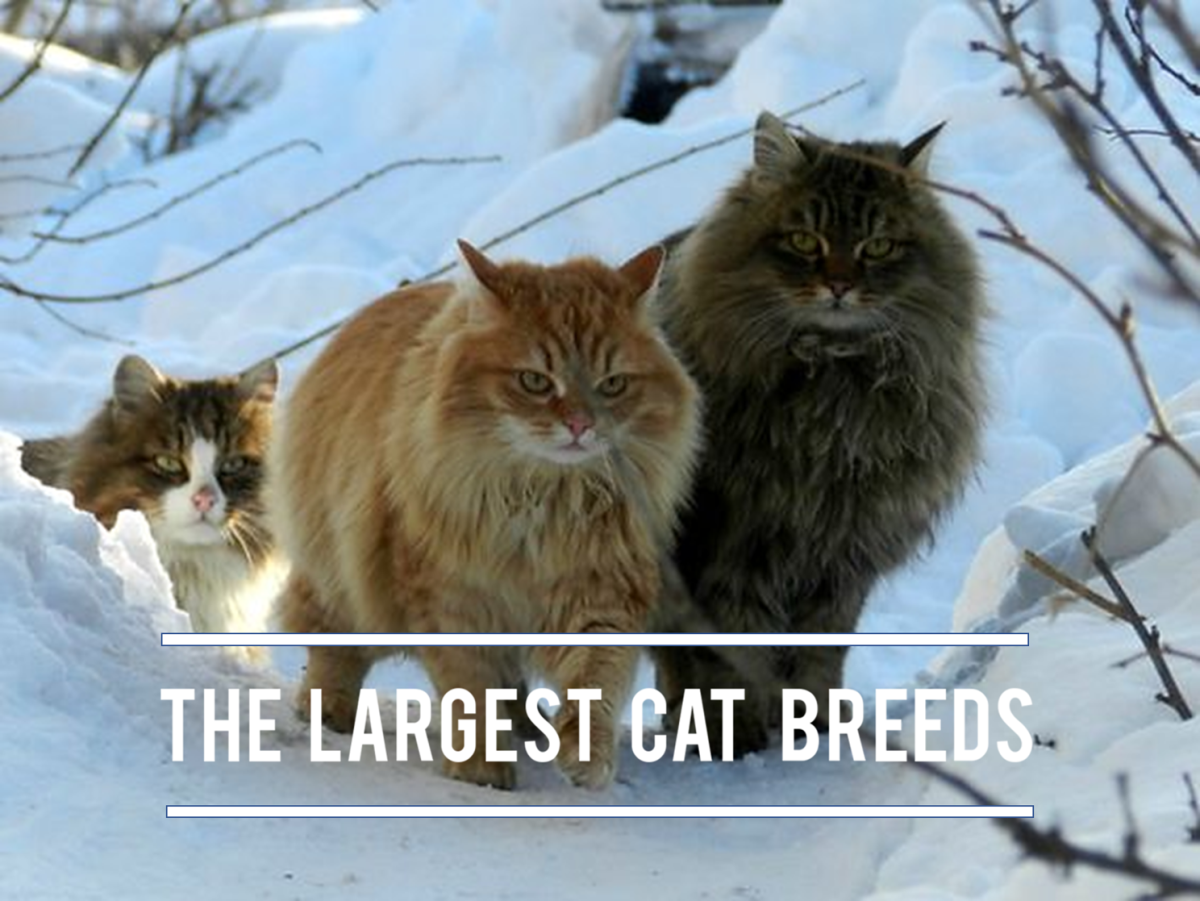Raising a Puppy
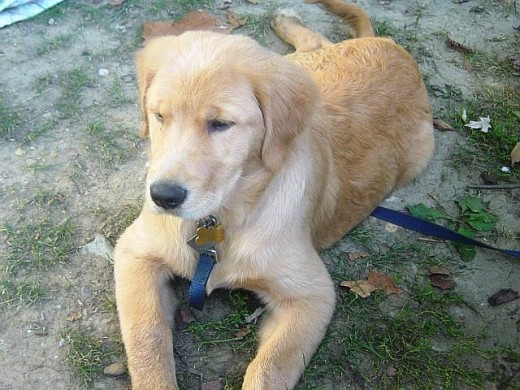
Choosing a puppy
But he's so cute!
In and ideal world, every owner would do copious amounts of research and planning before getting a new puppy. The fact of the matter is, this is usually not the case. I, too, have obtained animals on impulse. Even if you have researched and planned, the day you go pick out a puppy, you still may end up with the cuter one and not necessarily the one with the better temperament. This is not necessarily a bad thing. What does matter, is how much work you are willing/able to put into your puppy.
Today, we humans tend to anthropomorphize our pets. This means we attribute human emotions to our animals. For instance, when your pup looks up at you with those sad puppy dog eyes, is it because he's sad, or is it because he has learned that looking at you that way gets him love/treats/ etc? Today, pets are very much seen as part of the family (by most). They fulfill our emotional needs and can act as replacement family members (e.g. a couple may have dogs instead of children). This is really no surprise. Animals are good for our health. Holding and petting animals (particularly mammals) relieves our stress. It decreases our heart rates and blood pressure; and we do the same for them. So, one might choose a more timid dog because they are attracted to their clinginess, they feel sorry for it or it is the cutest one. That's not such a bad thing, however, you must recognize that socialization will be extremely important to prevent serious behavior issues. If you are really busy and don't have a lot of time to put into exercise, training, etc. you should probably pick a really mellow, even tempered breed/ individual. If you are wiling to work with some behavioral issues, you can base your decision more on the "emotional factors." Some people get puppies for more utilitarian reasons. If you want your dog to become a therapy dog, temperament will be more important.
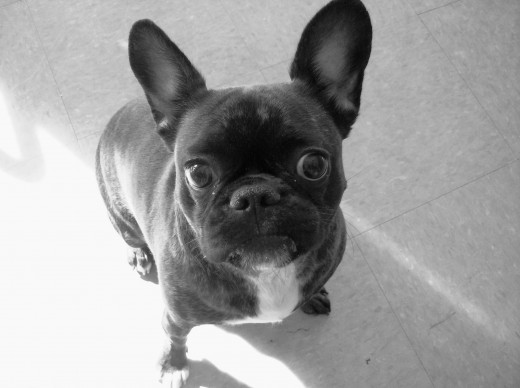
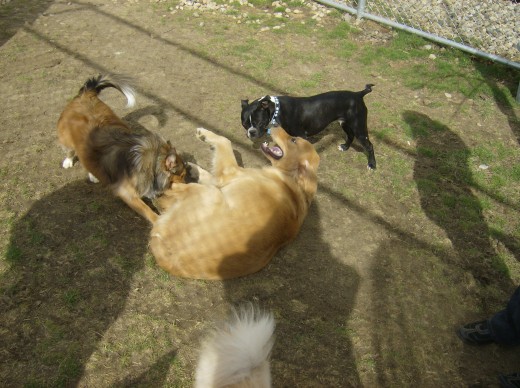
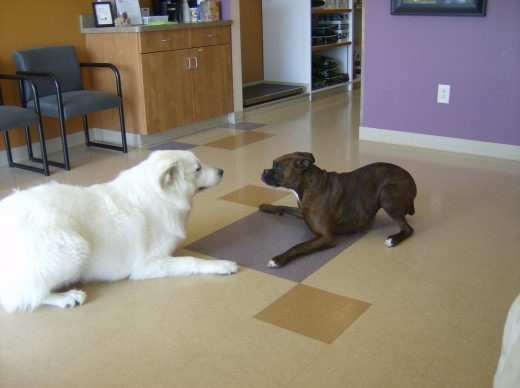
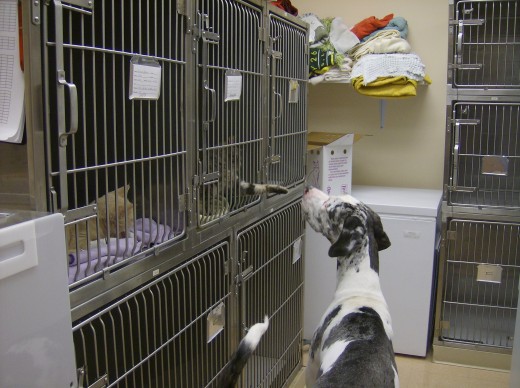
Have you met my puppy?
Socialization is extremely important when raising a puppy. Early experiences have a great impact on later behavior. The sensitive period for socialization is 9-13 weeks. By 18 weeks, the socialization window closes. After this time, it can be very difficult to acclimate your dog to unfavorable experiences. Most owners do not obtain their puppies until 6-8 weeks old and many owners do not receive their puppies until after 13 weeks. In addition, fear imprinting starts about 9 weeks of age. This is the time when your puppy is just starting to really get out into the world and it is crucial to survival to quickly learn what is safe and what is not. This makes the first months with your puppy very important.
Take your puppy everywhere possible with you. If you're going to go get some fast food, go through the drive-thru with your dog. Go to puppy classes, the park and people's houses to visit. Take your puppy on walks and go to the vet just to get some pets and a treat. You want to expose your puppy to as many sights, sounds people and animals possible in a positive manner. If your puppy is in the kitchen with you, drop a pan on the floor and then give the puppy a treat. Having a puppy gives you the license to act crazy. Make noise, take off in another direction suddenly and stomp your feet as you go. Your dog should interact with dogs of all ages, so it can learn appropriate dog behavior. Many dogs, raised without other dogs, simply have no clue what to do. This can cause fearfulness/defensiveness around other dogs. If you don't have children (or only have children of a certain age group), expose your puppy to different ages/stages (e.g. infant, toddler, 4 yr old, etc.). To prepare your puppy, handle them roughly. Don't hurt them, but it is okay to grab their tail (don't pull), fur, hug them, kiss their face, etc. Make this as positive and fun as possible.Give treats, laugh and praise your pup.
Again temperament plays a role. If you have a nervous individual, you may need to go slower and work harder to achieve a well socialized dog. It is also extremely important that you keep up with vaccinations. Since you will be taking your puppy to several different environments, you will be exposing it to a myriad of unknowns. The new vaccines and vaccine protocols are much more affective and allow owners to fulfill the needs at this crucial time.
When should I start training?
No Time Like the Present
You should start training your puppy immediately. It hasn't had much time to develop bad habits, so this is the perfect opportunity to prevent behavioral issues. Most puppies want to be by their owners, so teaching them leash manners at this age is much easier. Also, keep in mind, your large breed puppy may be small now, but it wont stay that way for long. It may be cute to have your mastiff puppy jump up on you, but it won't be so much fun when they're over 100 lbs.
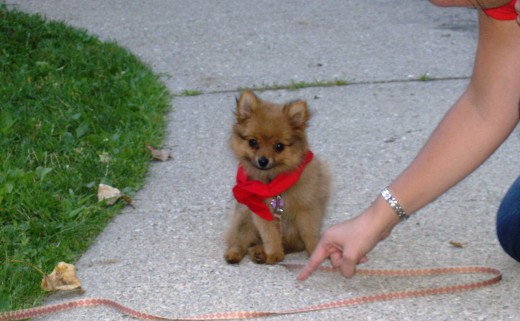
Pet Training and Behavior
- Pet Training and Behavior
Is your pet driving you crazy? Co-habitation conflicts are a major reason pets are neglected or given away. By having a basic understanding of animal behavior and behavior modification techniques almost all...
Crate Traning
Many people are wary of a crate; seeing them as harsh and cruel. Many puppies don't like them, but its not so much the cage itself, but the isolation. If you get your puppy from a breeder or litter, your puppy has been surrounded by another dog or person around the clock its whole life. When they come to your house, they are put into a crate by themselves. There are many things that can be done to make the crate a happy place.
Until your puppy is more adjusted, keep its crate in your bedroom at night. Some people opt to sleep by the crate the first couple of nights. Put some bedding in the crate that will be comfortable. Beds are awesome, but while they're potty training, I'd use something easy to clean like towels or fleece blankets. Give the puppy treat toys, like KONGs, to keep it busy and distracted. Giving treats to go in the crate works well too. Most dogs end up loving their crate and choose to lay in them throughout the day. My one yr old Airedale mix puts himself to bed at night. In the wild, canids tend to seek shelter to rest in. Think of a crate as your dog's bedroom. ***The crate should never be used for time outs***
There are several reasons why you should crate train. First, this is the easiest way to potty train a dog. They naturally want to stay away from their waste. However, they can become accustomed and dogs kept in small cages (pet stores, sometimes shelters) can be more difficult to potty train. The most important reason to crate train is that you never know. You never know if you'll need to board your dog while you're on vacation...or maybe the house is getting major repairs. You never know if your dog will get lost and have to spend a night or two in a shelter. You never know when your dog may get sick and have to stay at the vet. You never know if they will get seriously injured and have to be confined while healing. Of course, we try to prevent these things, but life happens sometimes. Stress lowers the immune system and any of these above situations are stressful and it is just adding to the stress if they are stressed out because they've never been confined. We want to reduce as much stress as possible. I've seen it many times; animals that have broken teeth on cages and rubbed their noses raw from being caged for a only a couple of minutes. This point also stresses the importance of socialization.
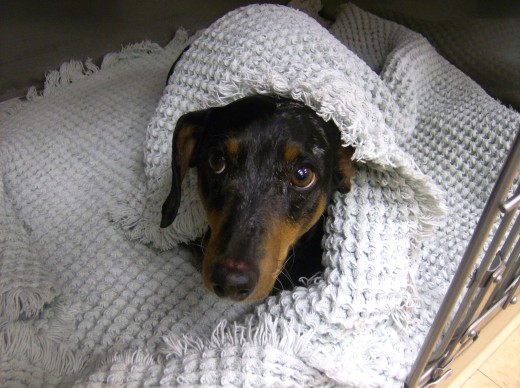
Potty Training
Crate training is the easiest way to potty train your puppy (see the above section). Some people teach their dogs to go in one spot, while others let them have free roam of the yard (your dog may pick its own spot). If you are training them to go in a certain spot, you will have to go to that spot every time you take them out (rain, shine, sleet or snow). Then, you wait. When they urinate/defecate, get really excited, praise and give treats. Do not scold for having an accident; they are learning.
You must consider the dog's age and size when potty training. Very young dogs do not have good bladder control and small dogs have tiny bladders. For instance, I would recommend someone take their chihuahua puppy out every half hour (and crate when they can't). The more time you get them to go outside and get reinforced, the faster they will learn. Also, you can try timing potty breaks by feeding/offering water to your pup at certain times. Chances are after a meal or a good drink of water, they will have to go.
More and more people are training their dog to ring bells on the door when they need to go out. This is accomplished by simple conditioning (See my Pet Behavior and Training Section-Link above). This works very well, but beware; your dog may ring it when it WANTS to go out and not just when it NEEDS to go out.
I have a quick story about the rolled newspaper method of training. Many people potty train by rubbing the dog's noses in their waste and smacking them with a newspaper, hand, etc. Lily, a black lab puppy, was trained that way. If she went in the house, she would get a quick smack. If she went in her cage, she was made to stay in it longer. Eventually, Lilly got to the point where she cried every time she would urinate/ defecate, whether anyone was near her or not. She didn't understand that she was getting hit for going in the house, she was conditioned to associate relieving herself with beating.
If you are positive, consistent and dedicated, your pup will be potty trained in no time!
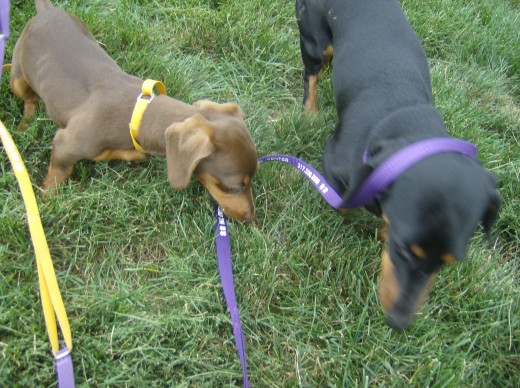
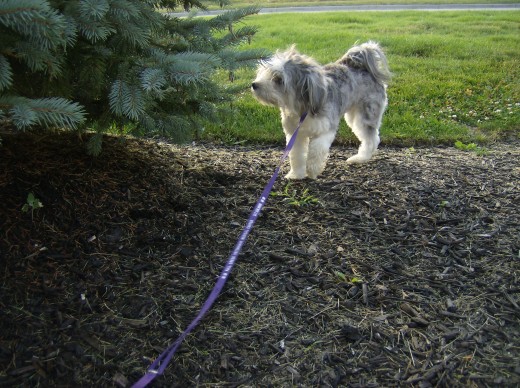
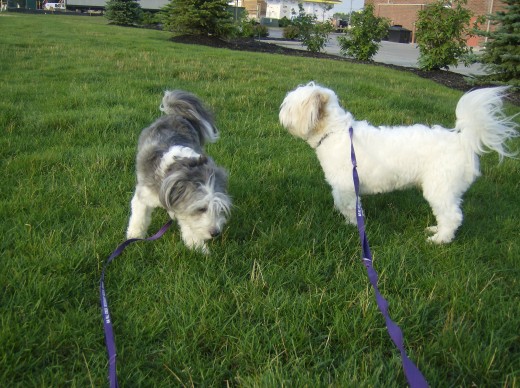
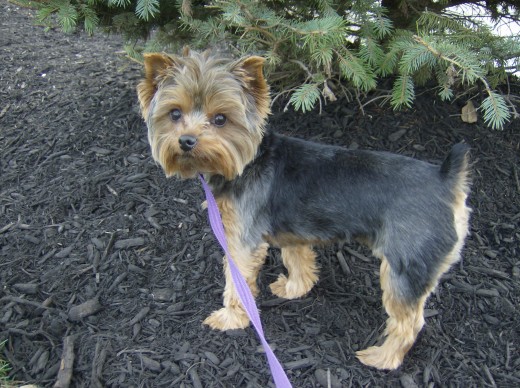
Grooming
Grooming should be part of the socialization process. The sooner you start, the better.
Nails
Many dogs are terrified of getting their nails trimmed. This make a simple procedure quite difficult and, in some cases, requires full sedation. Many vets will trim the puppies nails at each visit for vaccinations. However, this may not be enough to accustom your dog to nail trims. You may be able to take the tips off as often as every week. It will be a smaller trim and, therefore, more innocuous. Offer plenty of treats and praise while trimming their nails. When a dog becomes fearful, the procedure becomes stressful and sometimes expensive. It can become a real hassle, especially the dog has to be taken to a vet/groomer for nail trims. Many times owners will put it off. The quicks become longer and the nails aren't able to be cut as short. Some nails grow so that they curl under the foot and puncture the pad. Dogs are digitigrade animals. This means they bare weight on their toes. When the nails become too long, they are forced to walk on their nails. The toes will eventually become deformed and bend sideways. With practice, nail trims can take seconds. I have one dog that will roll on his back and put all four feet up in the air. Trimming his nails takes seconds.
Ears
Most dogs will get an ear infection at some point, but cleaning them regularly will help avoid them as well as condition your pup to let you put things in its ears in case they ever need ear medication. This is particularly true of floppy eared dogs. There are several good ear cleaners available and you could clean your dogs ears as often as once a week.
Bathing and Trimming
Many breeders do not recommend getting your puppy groomed until x weeks of age. However, the groomers I've talked to say this is unnecessary. By starting a grooming regimen early, the pup will grow to be an easily groomed dog. Again, this can be a extremely stressful procedure, that can require sedation. Your puppy may not have much to trim, but going in to get a bath and brush is still helpful. They will learn to stand nicely on the table and tolerate blow dryers. The groomer may be able to trim around the face, pads, give a "potty patch" or shave their belly (nice in the summer/ this area gets matted easily) at an early age. Most groomers will also trim nails, clean ears and express anal glands.
Brushing Teeth
If you can get in the habit of brushing your dogs teeth on a daily basis, you can reduce bad breath and the frequency of dental cleaning. This is particularly important in small breeds, brachycephalic breeds, greyhounds and individuals with other dental abnormalities. When the teeth get really bad, bacteria can cause bad breath and, if it enters the blood stream (via gingivitis, etc), it can cause life threatening illness, such as renal failure. There is a special toothpaste you can buy at most pet stores. Most dogs will love the taste and it usually takes longer for the owner to get a technique down than it does to condition the dog. Even humans need periodic cleanings and so will your dog, but you can drastically reduce the number of cleanings needed and possibly eliminate extractions. You will be rewarded with fresh breath and more money in your pocket.
